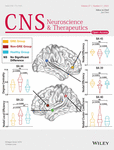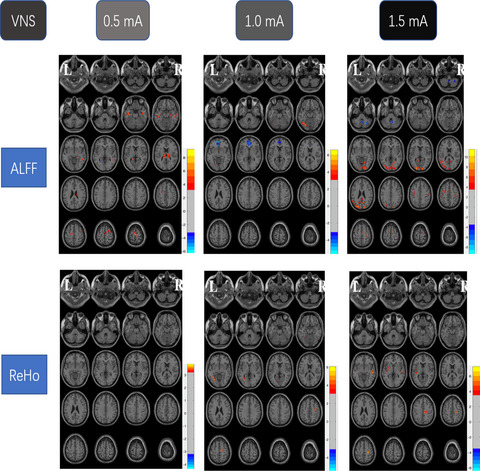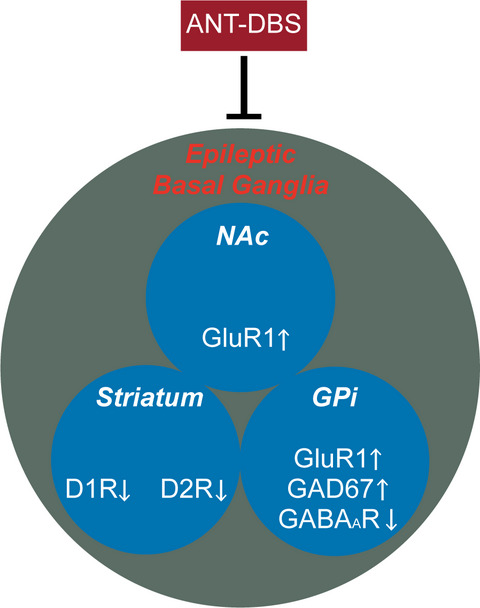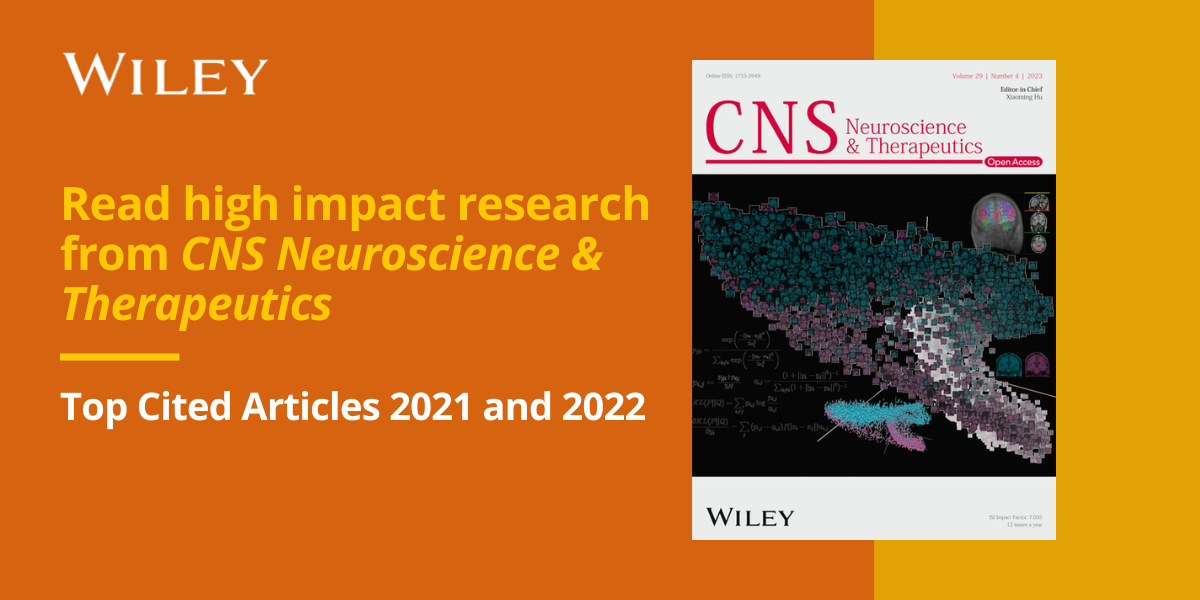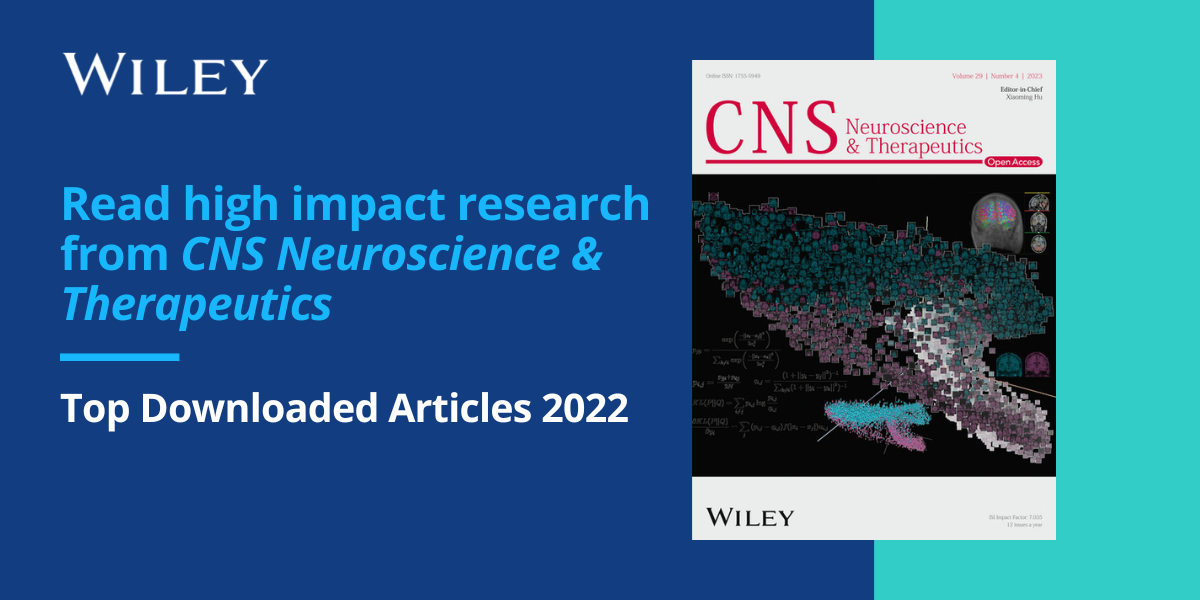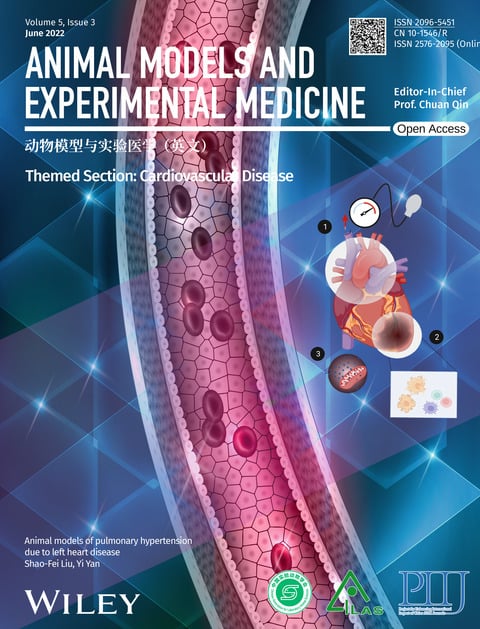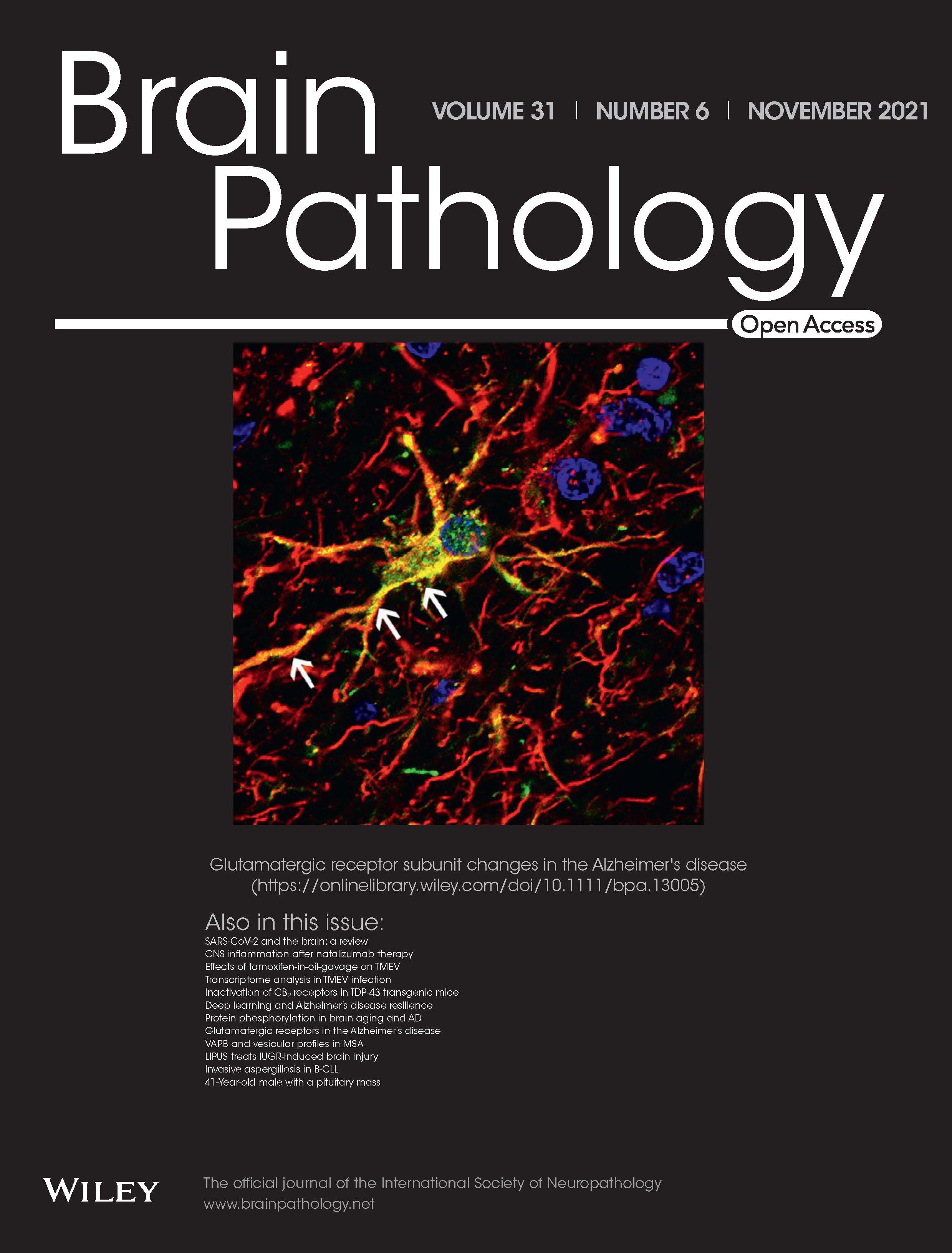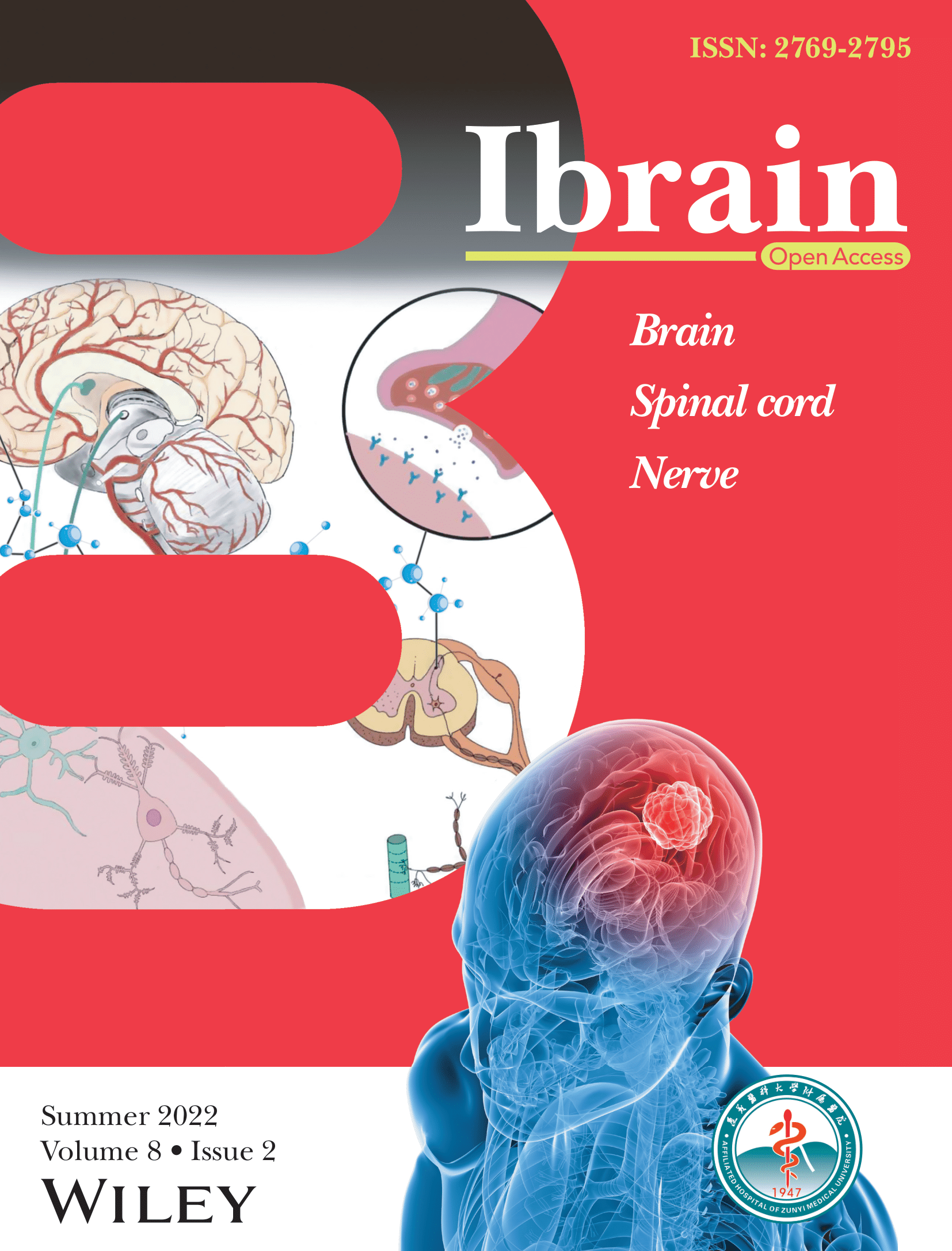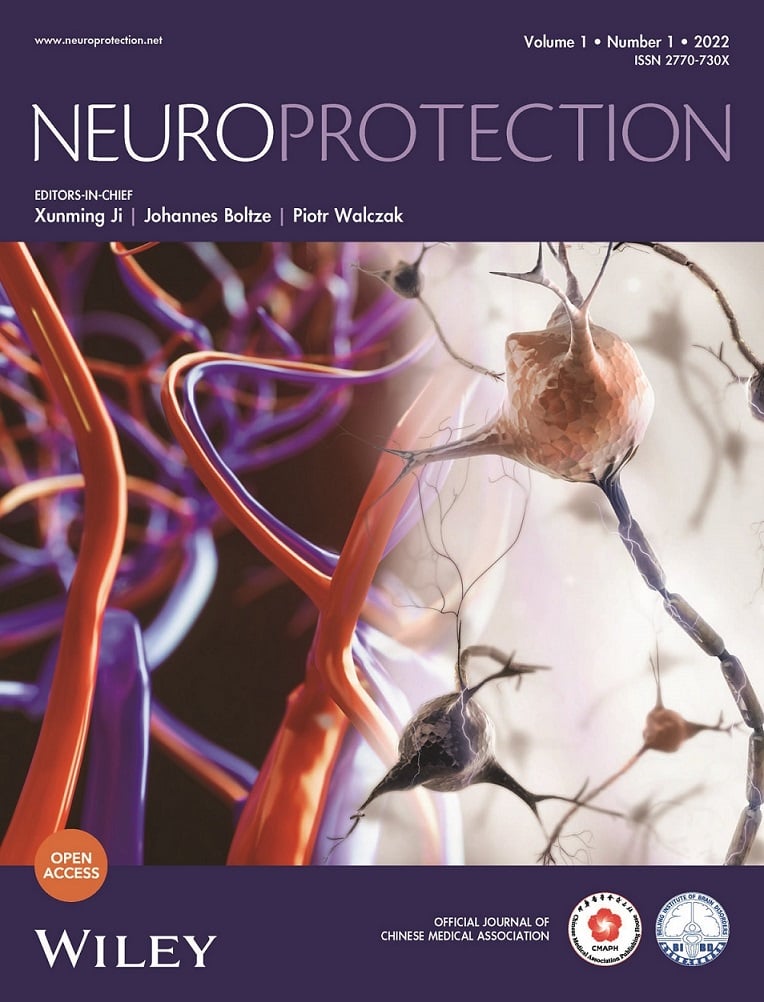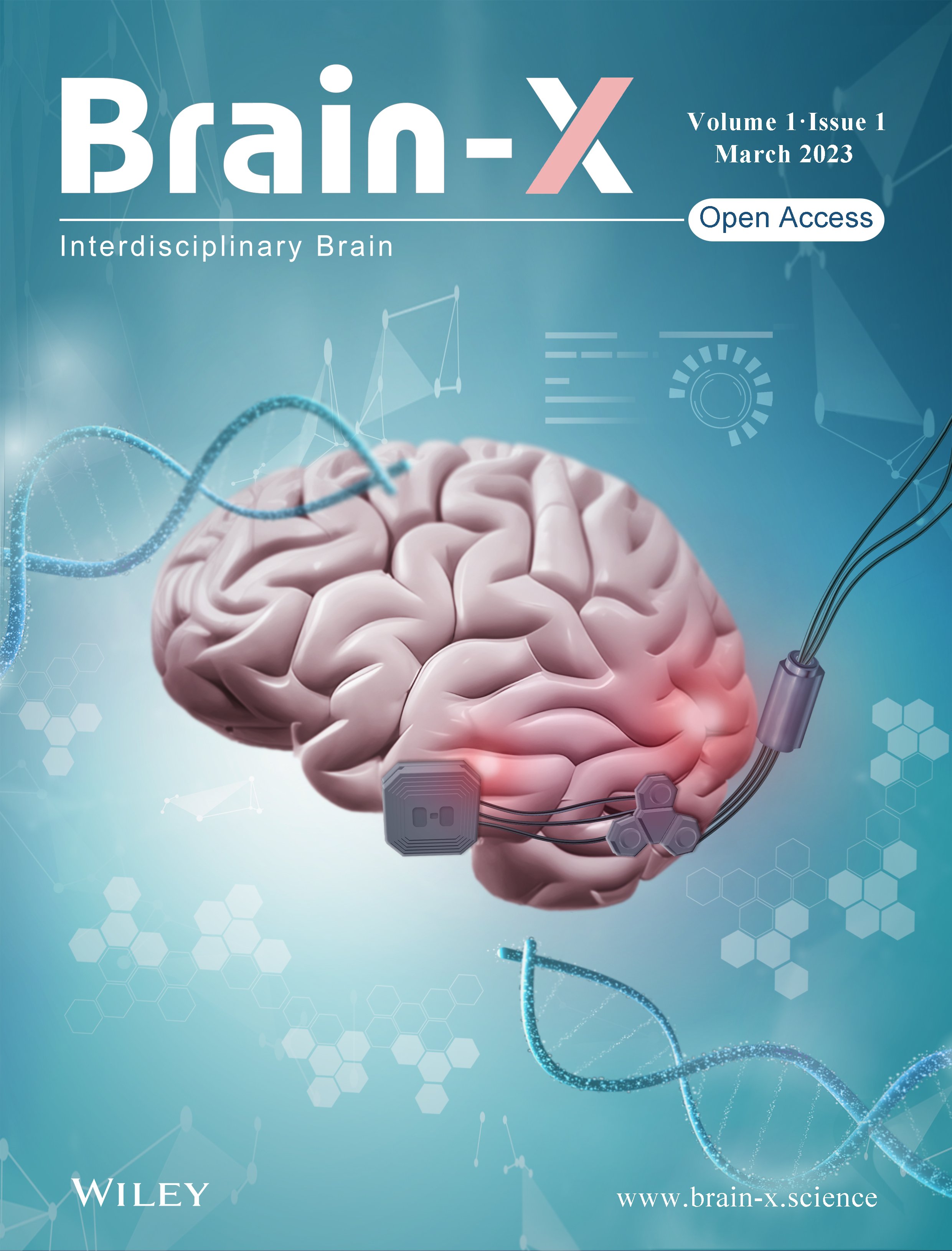Journal list menu
Export Citations
Download PDFs
COVER IMAGE
Cover Image
- Page: i
- First Published: 09 February 2021
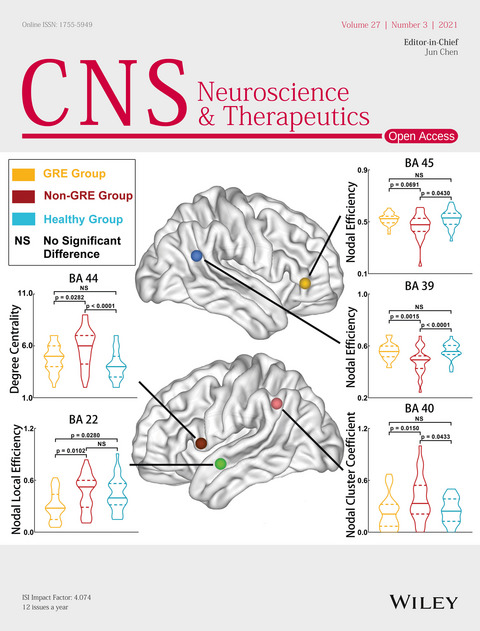
The cover image is based on the Original Article Epilepsy-related brain network alterations in patients with temporal lobe glioma in the right hemisphere by Tao Jiang et al., https://doi.org/10.1111/cns.13595.
ISSUE INFORMATION
EDITORIAL
Speech disturbance plays critical role in stroke recognition during COVID-19 pandemic
- Pages: 267-269
- First Published: 16 January 2021
REVIEW ARTICLE
Quality of life in Parkinson's disease: A systematic review and meta-analysis of comparative studies
- Pages: 270-279
- First Published: 28 December 2020
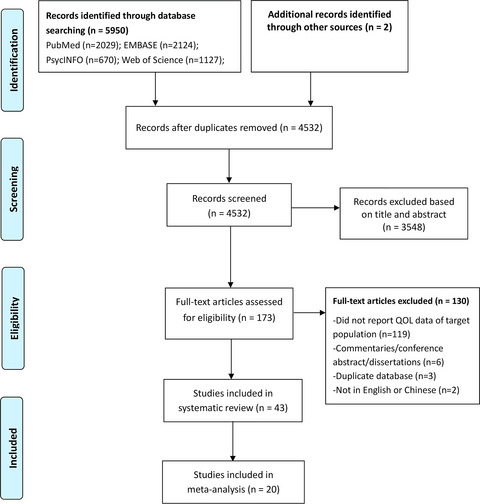
Improving the QOL in patients with PD is an important concern, which can provide reference for decisions of policymakers and clinicians. PD patients had significantly poorer QOL, with moderate to large effect sizes in most domains. Moreover, different QOL measures had moderating effects on the results.
ORIGINAL ARTICLES
Quality of life in children with tuberous sclerosis complex: A pediatric cohort study
- Pages: 280-288
- First Published: 23 November 2020
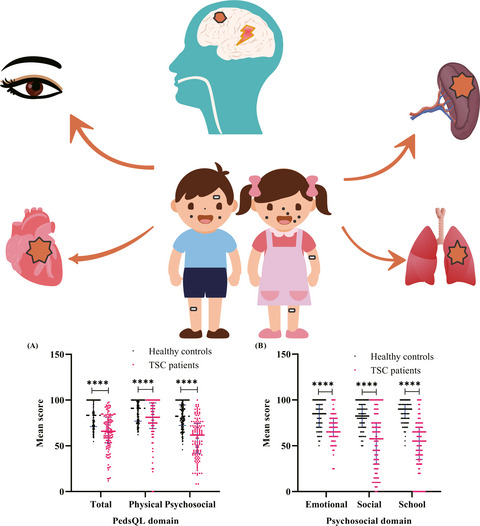
The quality of life of children with TSC is significantly lower than that of HCs. TSC2 mutation, epilepsy, early onset, long disease course and high reported seizure frequency (more than once a month), intellectual disability, and tuberous sclerosis–associated neuropsychiatric disorders are risk factors for poor quality of life.
Alterations in intrinsic functional networks in Parkinson’s disease patients with depression: A resting-state functional magnetic resonance imaging study
- Pages: 289-298
- First Published: 21 October 2020
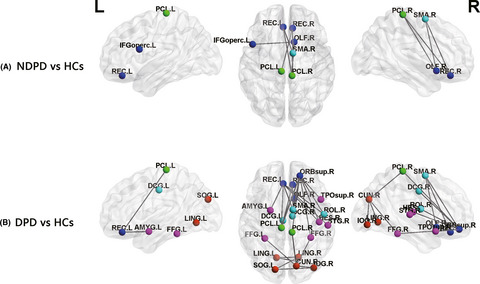
The functional brain networks of the patients with Parkinson's disease (PD) with depression exhibite small-world architecture. PD depression is associated with disruptions in the topological organization of functional brain networks, mainly involved the temporal-occipital visual cortex and the posterior cingulate gyrus.
Brain morphometric abnormalities in boys with attention-deficit/hyperactivity disorder revealed by sulcal pits-based analyses
- Pages: 299-307
- First Published: 06 August 2020
Intranasal insulin improves mitochondrial function and attenuates motor deficits in a rat 6-OHDA model of Parkinson's disease
- Pages: 308-319
- First Published: 26 January 2021
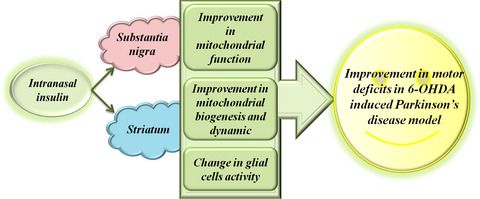
Intranasal administration of insulin causes direct delivery of insulin from nose to the various areas of the brain including substantia nigra and striatum. We showed that insulin can improve mitochondrial function indices and modulate mitochondrial biogenesis and fission as well as astrocytes and microglia activity which overall leads to improved motor performance in a rat model of Parkinson's disease.
Altered amplitude of low-frequency fluctuations and regional homogeneity in drug-resistant epilepsy patients with vagal nerve stimulators under different current intensity
- Pages: 320-329
- First Published: 23 September 2020
Efficacy, safety, and tolerability of adjunctive perampanel in patients from China with focal seizures or generalized tonic-clonic seizures: Post hoc analysis of phase III double-blind and open-label extension studies
- Pages: 330-340
- First Published: 08 September 2020
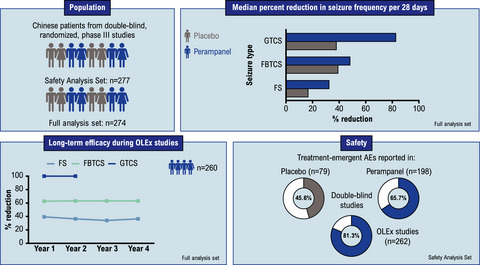
- Adjunctive perampanel was associated with greater median percent reductions in seizure frequency per 28 days vs placebo in Chinese patients with focal or generalized seizure types during double-blind, randomized, phase III studies.
- During OLEx studies, adjunctive perampanel showed efficacy for up to 4 years for FS and FBTCS, and up to 2 years for GTCS.
- Perampanel was generally well tolerated during short- and long-term treatment.
Deep brain stimulation of the anterior nuclei of the thalamus relieves basal ganglia dysfunction in monkeys with temporal lobe epilepsy
- Pages: 341-351
- First Published: 21 October 2020
Suppressing synchronous firing of epileptiform activity by high-frequency stimulation of afferent fibers in rat hippocampus
- Pages: 352-362
- First Published: 16 December 2020
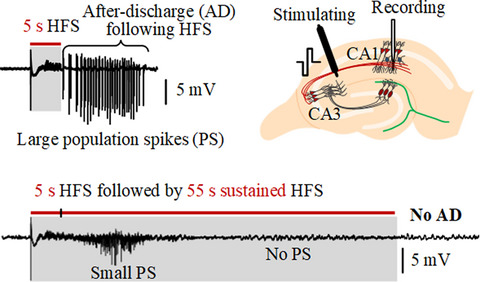
Sustained high-frequency stimulations (HFS) of 100 Hz pulses can suppress the population spikes (PS) in the epileptic afterdischarges induced by a short HFS in the rat hippocampal region. The possible mechanisms are a desynchronization of neuronal firing and a recovery of inhibitions in the local neuronal circuits. The findings provide new clues for developing brain stimulation therapy.
Epilepsy enhance global efficiency of language networks in right temporal lobe gliomas
- Pages: 363-371
- First Published: 19 January 2021
LETTER TO THE EDITOR
Hashimoto's encephalopathy: A rare cause of refractory status epilepticus
- Pages: 372-375
- First Published: 21 December 2020




